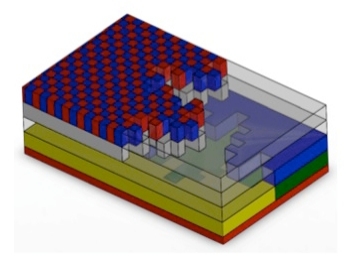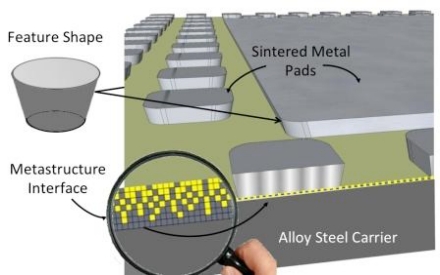By Debra Vogler, senior technical editor
January 31, 2011 — Arthur Chait, president and CEO of EoPlex, describes the company’s high-volume print forming technology — a lead carrier product called xLC– and how it enables a cost-effective replacement for conventional quad flat pack no-lead (QFN) leadframes.
Listen to Chait’s interview: Download (for iPhone/iPod users) or Play Now
In a podcast interview with Debra Vogler, senior technical editor, Chait explains how a 3D structure is built up "microbrick" by microbrick using 3D pixels, called voxels (volumetric pixel), that are addressable (i.e., able to be changed) (Fig. 1). Key to the technology is being able to control the feature shape and metastructure interface (Fig. 2), which Chait discusses in detail in the podcast.
 |
|
Figure 1. EoPlex model (used as an example) showing different materials (colors) and different metastructures (patterns). |
By using high-volume print forming, the resulting lead carrier lowers costs (compared to QFN leadframes) by minimizing the amount of metal needed for the structure and eliminating the need for processes such as plating and etching. The company is currently working with potential customers to evaluate and qualify the xLC product; qualification testing is expected to be completed sometime in the second or third quarter of this year and Chait says the company expects to be in full production by the end of 2011.
 |
|
Figure 2. Two keys to the success of the xLC are controlling the feature shape and engineering the metastructure interface. |
Follow Advanced Packaging on Twitter.com by clicking www.twitter.com/advpackaging. Or join our Facebook group

